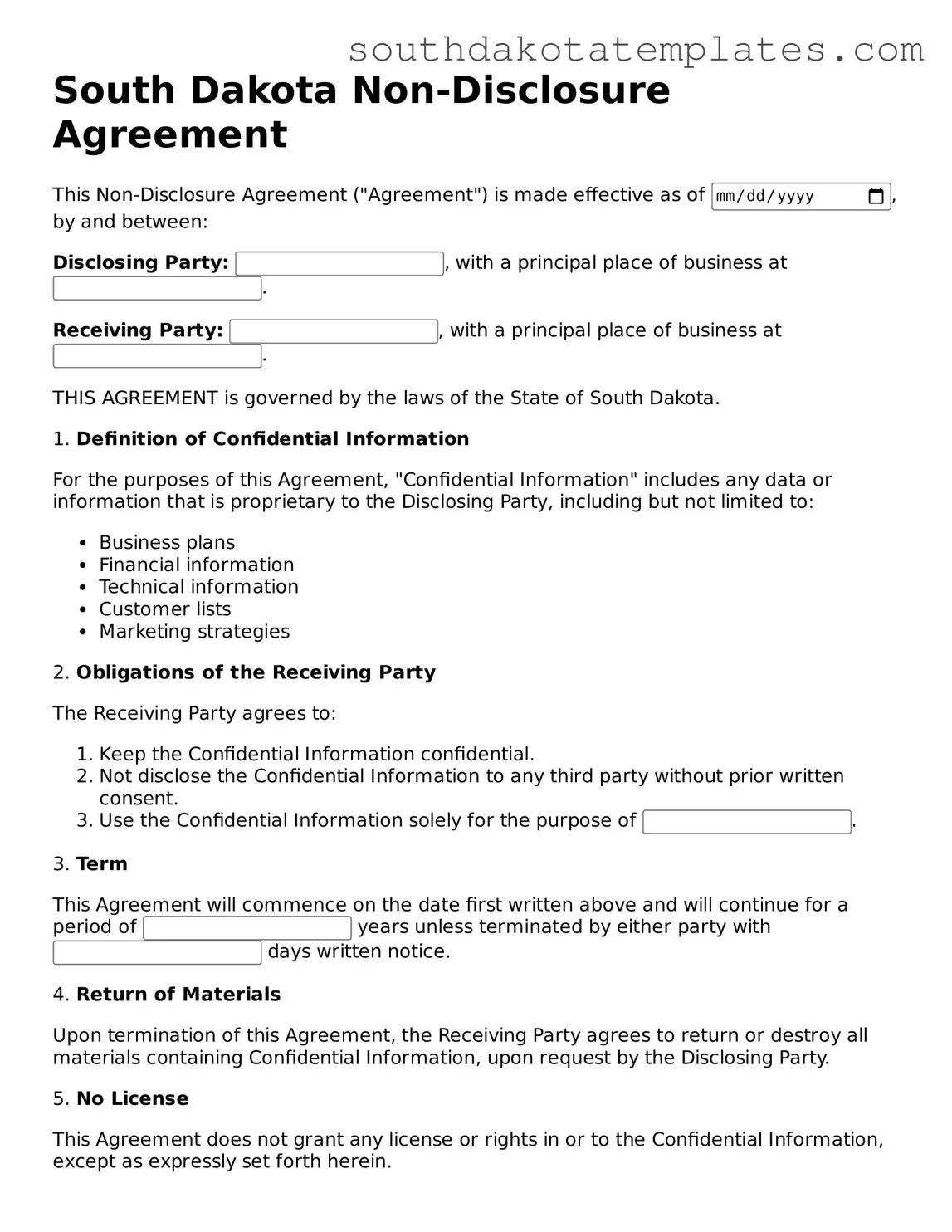The South Dakota Non-disclosure Agreement (NDA) form serves as a crucial legal tool for individuals and businesses seeking to protect sensitive information from unauthorized disclosure. This agreement establishes a confidential relationship between parties, ensuring that proprietary information, trade secrets, and other critical data remain secure. Typically, the NDA outlines the definition of confidential information, the obligations of the parties involved, and the duration of confidentiality. It may also specify the permissible uses of the disclosed information and the consequences of breach, reinforcing the importance of safeguarding intellectual property. By clearly delineating these aspects, the South Dakota NDA not only fosters trust between parties but also provides a legal framework that can be enforced in case of a dispute. Understanding the nuances of this form is essential for anyone looking to engage in business negotiations, partnerships, or collaborations in South Dakota, where the protection of sensitive information is paramount to maintaining a competitive edge.
